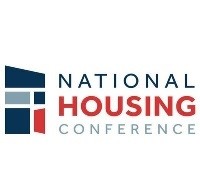Assessment part of Obama Administration plan to prevent and end homelessness
WASHINGTON, DC – February 10, 2011 – (RealEstateRama) — For the first time ever, the U.S. Department of Housing and Urban Development (HUD) and the U.S. Department of Veterans Affairs (VA) today published the most authoritative analysis of the extent and nature of homelessness among American veterans. According to HUD and VA’s assessment, nearly 76,000 veterans were homeless on a given night in 2009 while roughly 136,000 veterans spent at least one night in a shelter during that year.
This unprecedented assessment is based on an annual report HUD provides to Congress and explores in greater depth the demographics of veterans who are homeless, how veterans compare to others who are homeless, and how veterans access and use the nation’s homeless response system. Read Veteran Homelessness: A Supplement to the 2009 Annual Homeless Assessment Report to Congress.
“This report offers a much clearer picture about what it means to be a veteran living on our streets or in our shelters,” said HUD Secretary Shaun Donovan. “Understanding the nature and scope of veteran homelessness is critical to meeting President Obama’s goal of ending veterans’ homelessness within five years.”
“With our federal, state and community partners working together, more Veterans are moving into safe housing,” said Secretary of Veterans Affairs Eric K. Shinseki. “But we’re not done yet. Providing assistance in mental health, substance abuse treatment, education and employment goes hand-in-hand with preventive steps and permanent supportive housing. We continue to work towards our goal of finding every Veteran safe housing and access to needed services.”
Last June, President Obama announced the nation’s first comprehensive strategy to prevent and end homelessness, including a focus on homeless veterans. The report, Opening Doors: Federal Strategic Plan to Prevent and End Homelessness, puts the country on a path to end veterans and chronic homelessness by 2015; and to ending homelessness among children, family, and youth by 2020. Read more about the Administration’s strategic plan to prevent and end homelessness in America.
Key findings of the report released today include:
- More than 3,000 cities and counties reported 75,609 homeless veterans on a single night in January of 2009; 57 percent were staying in an emergency shelter or transitional housing program while the remaining 43 percent were unsheltered. Veterans represent approximately 12 percent of all homeless persons counted nationwide during the 2009 ‘point-in-time snapshot.’
- During a 12-month period in 2009, an estimated 136,000 veterans—or about 1 in every 168 veterans—spent at least one night in an emergency shelter or transitional housing program. The vast majority of sheltered homeless veterans (96 percent) experienced homelessness alone while a much smaller share (four percent) was part of a family. Sheltered homeless veterans are most often individual white men between the ages of 31 and 50 and living with a disability.
- Veterans are fifty percent more likely to become homeless compared to all Americans and the risk is even greater among veterans living in poverty and poor minority veterans. HUD and VA examined the likelihood of becoming homeless among American veterans with particular demographic characteristics and found that during 2009, twice as many poor Hispanic veterans used a shelter compared with poor non-Hispanic veterans. African American veterans in poverty had similar rates of homelessness.
- Most veterans who used emergency shelter stayed for only brief periods. One-third stayed in shelter for less than one week; 61 percent used a shelter for less than one month; and 84percent stayed for less than three months. The report also concluded that veterans remained in shelters longer than did non-veterans. In 2009, the median length of stay for veterans who were alone was 21 days in an emergency shelter and 117 days in transitional housing. By contrast, non-veteran individuals stayed in an emergency shelter for 17 days and 106 days in transitional housing.
- Nearly half of homeless veterans were located in California, Texas, New York and Florida while only 28 percent of all veterans were located in those same four States.
- Sheltered homeless veterans are far more likely to be alone rather than part of a family household; 96 percent of veterans are individuals compared to 66 percent in the overall homeless population.
HUD and VA are currently working together to administer a joint program specifically targeted to homeless veterans. Through the HUD-Veterans Affairs Supportive Housing (HUD-VASH) Program, HUD provides rental assistance for homeless veterans while VA offers case management and clinical services. Since 2008, a total investment of $225 million is working to provide housing and supportive service for approximately 30,000 veterans who would otherwise be homeless.
In addition, last month HUD awarded $1.4 billion to keep nearly 7,000 local homeless assistance programs operating in the coming year. The Department also allocated $1.5 billion through its new Homeless Prevention and Rapid Re-housing (HPRP) Program. Made possible through the American Recovery and Reinvestment Act of 2009, HPRP is intended to prevent persons from falling into homelessness or to rapidly re-house them if they do. To date, more than 850,000 persons, including more than 15,000 veterans, have been assisted through HPRP.
###
HUD’s mission is to create strong, sustainable, inclusive communities and quality affordable homes for all. HUD is working to strengthen the housing market to bolster the economy and protect consumers; meet the need for quality affordable rental homes: utilize housing as a platform for improving quality of life; build inclusive and sustainable communities free from discrimination; and transform the way HUD does business. More information about HUD and its programs is available on the Internet at www.hud.gov and espanol.hud.gov.
Contact:
Brian Sullivan
(202) 708-0685














